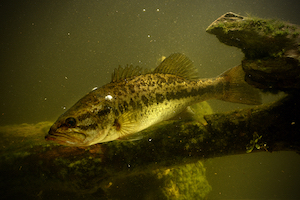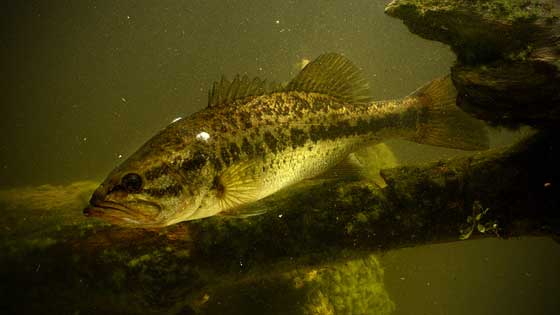Largemouth Bass Winter Fishing

When the water reaches 45°F to 50°F/7°C to 10°C , the bass school together and barely move. They don’t actively feed like they do in warmer weather.
In southern lakes, the largemouth move into deeper water near submerged trees and rock piles. This is can be challenging fishing unless you’re equipped with the right knowledge.
How to catch these fish
In southern United States, cast along the shoreline of lakes in flat weed beds with spinnerbaits or plastic worms.
Tip: Large bass feed actively in the sun-warmed shallows.
Winter bass fishing lures
Many small northern ponds with fewer than 10 feet of water contain large bass which resist fighting in the cold water.
When fishing these small farm ponds in the cold, use a plastic worm with a small split shot above the hook. The weight allows you to feel the bottom of the pond and reduce the chance of getting a snag.
When fishing in open lakes, focus on submerged timber near the shoreline and deep drop-offs.
- Use vertical jigging with spoons
- Drop the lure among the submerged timber brush, jigging the lure up and down
This will cause the lure to resemble a dying shad. And bass enjoy feeding on dying shad.
- Expect a hit on the downward motion of the lure.
You can also use spinnerbaits jigged vertically, or just cast the lure and retrieve it with a slight vertical pulling action.
Fish the lure very slowly. Where one bass is caught, there’s a high likelihood that other bass are schooled at the same depth.
While winter may be slow, Largemouth Bass always enjoy crayfish. This is their number one bait. For novice anglers, we recommend starting off with live bait as it’s easier to fish with and will return more success.



